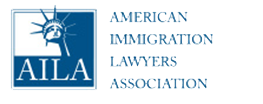I-9: Employer Compliance With Employment Eligibility And Verification Requirements And Avoidance Of Discrimination In The Hiring Process
/In the 1980’s, the United States government was seeking to curb illegal immigration to the U.S. It believed if the source of the attraction were cut off, i.e. employment opportunities, their ends would be achieved. Employment eligibility attestations and the threat of sanctions would require employers to only hire persons authorized to work here. In an attempt to achieve these goals, Congress passed the Immigration Reform and Control Act in 1986 (IRCA).
IRCA made all employers responsible for ensuring that every employee hired after November 6, 1986 document their eligibility to work in the United States, be they U.S. citizens or otherwise. A further requirement to establish that their identity match their employment authorization information was also added. Completion and retention of the Employment Eligibility Verification Form I-9 is now required for every employee hired.
The new verification requirements gave rise to certain problems in the hiring process when employers began to require more documents than those listed as acceptable proofs of work authorization. To resolve this issue Congress signed the Immigration Act of 1990 (IMMACT 90) making such requests a violation of IRCA’s anti-discrimination provisions.
I.Employer Obligations Under IRCA and the I-9 Process
Upon commencement of employment, employers are required to have every employee complete Form I-9 without regard to citizenship or national origin. An employee is any person who is compensated, monetarily or otherwise, for services to the employer.
An employee must provide documents from among a designated list to establish their identity and eligibility to work. Both employer and employee attest under penalty of perjury regarding the accuracy of the documents presented as proof of employment eligibility. If a document presented appears genuine and to belong to the person presenting it, the employer must accept it and cannot dismiss the employee for document related reasons.
The law specifically requires that employers:
- A) Have any new hire fill out section 1 of the Form I-9 when they begin work;
- B) Review the documents establishing the employee’s identity and eligibility to work;
- C) Properly complete Section 2 of the I-9 Form;
- D) Retain the I-9 Form for 3 years after the date the person begins work or 1 year after the persons employment is terminated, whichever is later;
- E) Make the I-9 Form available upon request for inspection to an INS officer, or the Department of Labor (DOL) or Office of Special Counsel for Immigration Related Unfair Employment Practices (OSC).
An employee must complete section 1 when they are hired. They must fill in the correct information and sign and date the form. If a translator is needed to help the employee, they must read the form to the employee and then sign the Preparer/Translator Certification section. It is the employer’s responsibility to ensure that it is fully completed.
Section 2 requires the employee to present the original documents that establish their identity and employment eligibility. The employee has the choice of which documents to present and must do so within 3 days of starting their employment.
The employer must inspect the originals of the documents presented and complete section 2. The title, issuing agency, number and any expiration date must be filled in and the form signed. If the employee cannot present the documents in 3 business days, they must provide a receipt for the application of the documents, and a notation stating such made in the “document #” space. If a receipt is presented, the actual document must be provided within 90 days of employment.
IRCA delineated which documents may be submitted to establish both identity and employment eligibility. Three categories of documents were created:
- a. those that establish both identity and employment eligibility (List A);
- b. those that establish identity only (List B);
- c. those that establish work eligibility only (List C).
Employers, recruiters and referrers for a fee must review the original documents and affirm that they appear to be genuine and relate to the individual. It is within the discretion of the employee as to which documents to present and it is illegal for the employer to demand more or different documents, provided the one’s submitted meet I-9 standards.
A.Documents that establish both identity and employment eligibility
IIRAIRA modified IRCA by reducing the number of permissible documents. Congress removed the following from List A: certificates of naturalization, certificates of citizenship, re-entry permits, and refugee travel documents. The documents acceptable for List A are:
- A U.S. passport;
- An alien registration receipt card or permanent resident card, Form I-551;
- A foreign passport with a temporary I-551 stamp;
- An employment authorization document issued by the Service that contains a photograph (Form I-766, Form I-688, Form I-688A, or Form I-688B); and
- In the case of a non immigrant alien authorized to work for a specific employer, a foreign passport with Form I-94 bearing the same name as the passport and indicating an endorsement of the alien’s non-immigrant status where the period of employment has not expired, and the proposed employment is not in conflict with any restrictions identified on the I-94.
B. Documents that establish identity only
Wide ranges of documents are available in this category, though INS has proposed to remove some of the documents to clarify any confusion among employers. Acceptable documents are:
- A driver’s license or identification document issued by a state, federal, -or-
local government containing a photo or other identifying information; - For individuals under age 16 or in a state that does not issue an appropriate identification document, documentation of personal identity found by the Attorney General to be reliable;
- Native American tribal document;
- Canadian drivers license in the case of a Canadian non-immigrant authorized to work pursuant to status with a specific employer;
- ID card issued by federal, state or local government agencies or entities provided it contains a photograph or information such as name, date of birth, sex, height, eye color, and address;
- School ID card with a photograph;
- Voter's registration card;
- U.S. Military card or draft record ;
- Military dependent's ID card;
- U.S. Coast Guard Merchant Mariner Card;
- Driver's license issued by a Canadian government authority.
For persons under age 18 who are unable to present a document listed above:
12.School record or report card
13.Clinic, doctor, or hospital record
14.Day-care or nursery school record
C. Documents that establish employment authorization only
Changes were again made to this list by IIRAIRA. The following documents are acceptable:
- A social security card (other than a card stating it is not valid for employment
- A Native American tribal document
- Certification of Birth Abroad issued by the Department of State (Form FS-545 or Form DS-1350)
- A birth certificate issued by a state, county or municipal authority or outlying possession of the U.S. bearing an official seal
- U.S. Citizen ID Card (INS Form I-197)
- ID Card for use of Resident Citizen in the United States (INS Form I-179)
- Unexpired employment authorization document issued by the INS (other than those listed under List A)
II.Recruiting, Hiring and Discrimination Issues
It is unlawful to discharge current employees, refuse to hire new employees, or discriminate against a person on the basis of their accent, name, foreign appearance or language. Employers must generally conduct their recruiting and hiring without regard to the citizenship or national origin of those authorized to work. However, if an employer wishes to use employment eligibility as a factor in its hiring policy and process, it must do so for every employee that it considers. Standards that vary depending on the person that is applying is illegal. An employer cannot adopt a blanket policy favoring the hire of qualified U.S. citizens over qualified aliens. However, it is legal for an employer to prefer a qualified U.S. citizen over a qualified alien on an individual basis. If the circumstances of the job require U.S. citizens only, such as special government contracts, then it is lawful discrimination to choose the U.S. citizen.
Any verification procedure an employer implements, must be carried out in the same manner for every new hire. Different standards for different groups of people are a violation of the anti-discrimination provisions. A person’s citizenship or national origin cannot be used to discriminate against protected persons as related to hiring, firing, and recruitment. Protected persons are citizens and nationals, legal permanent residents, and persons granted asylum status.
Proof of work eligibility must be presented at the time of hire or when the employee begins work. Requests for proof of eligibility should not be requested earlier in the recruiting, interviewing, or hiring process. An employer must review proof of work eligibility from every newly hired employee and not because of a person’s name, appearance, or accent.
Any person or entity may file a written complaint with the INS or Department of Labor if it believes that an employer has violated an Act provision in its hiring or discharging practices. The complaint must have detailed information regarding the complainant, the alleged violating employer, and the date, time, and place of the claimed discriminatory conduct.
The INS or the Department Labor may determine after an investigation that a violation has occurred and issue a Notice of Intent to Fine or Notice of Warning. The forms issued must contain clear information regarding the nature and consequences of the charges and the procedures to contest the charges.
An employer may argue good faith compliance with the employment verification regulations as an affirmative defense to charges of violating INA §274A(a)(1)(A). Technical or procedural errors such as missing addresses are also a good faith defense. IIRAIRA provides that in such cases, the problem be explained to the employer and time given to correct the error.
III.Potential Problems and Penalties
A. Constructive Knowledge of an Unauthorized Alien
It is punishable by law to knowingly hire or continue to employ unauthorized aliens. Employers must be aware that “knowing” includes not only actual knowledge but also inference through certain facts or circumstances that if reasonably inquired into would reveal a particular issue. However, an employer cannot infer that an employee is ineligible to work because of their appearance or accent. The INS cites several scenarios where an employer may have constructive knowledge:
- Employer fails to complete or improperly completes the Form I-9;
- Employer has information available to it that would indicate that the alien is not authorized to work (such as Labor Certification and/or an Application for Prospective Employment);
- Employer acts with reckless and wanton disregard for the legal consequences of permitting another individual to introduce an unauthorized alien into its work force or to act on its behalf.
B. What to do if an unauthorized employee is discovered
If an employer identifies an employee who has been working unlawfully they may give the employee another chance to provide proper documentation and accordingly amend the I-9. The employee should be given adequate time to submit the documents. If the employee cannot present acceptable documents then the employer should terminate the employee. An employer can be penalized for the continued employment of an employee who cannot present acceptable documents.
C. Penalties
The employment of an unauthorized alien in violation of the Immigration and Nationalization Act carries civil and potential criminal penalties. Written complaints alleging violation of the Act must be filed with the INS office having jurisdiction over the business or residence of the violator. Detailed information about the alleged violator, date, time and place of the violations must be submitted, as well as information about the complainant. INS may conduct an investigation, and if it determines that a violation has occurred, a Notice of Intent to Fine or a Warning Notice may be issued.
Civil penalties are as follows:
a. Violation of INA §274A(a)(1)(A) or (a)(2):
- (1)$250 to $2,000 fine for each unauthorized individual
- (2)$2,000 to $5,000 for each employee if the employer has previously been in violation; or
- (3)$3,000 to $10,000 for each individual if the employer was subject to more than one cease and desist order.
b. Violation of INA §274A(a)(1)(b) (paperwork), an employer may be fined $100 to $1,000 for each individual.
Criminal penalties are imposed for a pattern and practice of violation in an amount up to $3,000 for each unauthorized employee, imprisonment up to six months, or both.
Document fraud under §274C of the INA is another potential source of penalties an employer may face. Knowingly using, possessing, accepting or receiving a document that is forged or altered in order to obtain a benefit under the Act can be fined by civil and criminal penalties. It is equally unlawful to use, possess or obtain lawful documents issued to another person or to assist someone to obtain such documents. The same civil fine schedule applies, including adjustments for inflation. Title 18 of the U.S. Code provides for up to five years imprisonment for preparing a false document.
Conclusion
Employers and their attorney’s should familiarize themselves with the myriad of rules and policy decisions of the INS when it comes to employment verification of their employees. Though the law intends to provide clear guidance to employers, the nature of the situation is ripe for misunderstandings and complicated scenarios. However, if employers make good faith efforts to follow the basic rules and apply them to each and every new hire without exception most risks are averted. Perhaps even the principle of promoting legal immigration to the United States will be served and employers will be assured of a ready and able work force.




